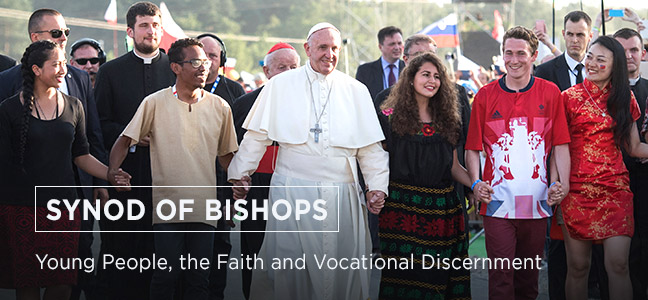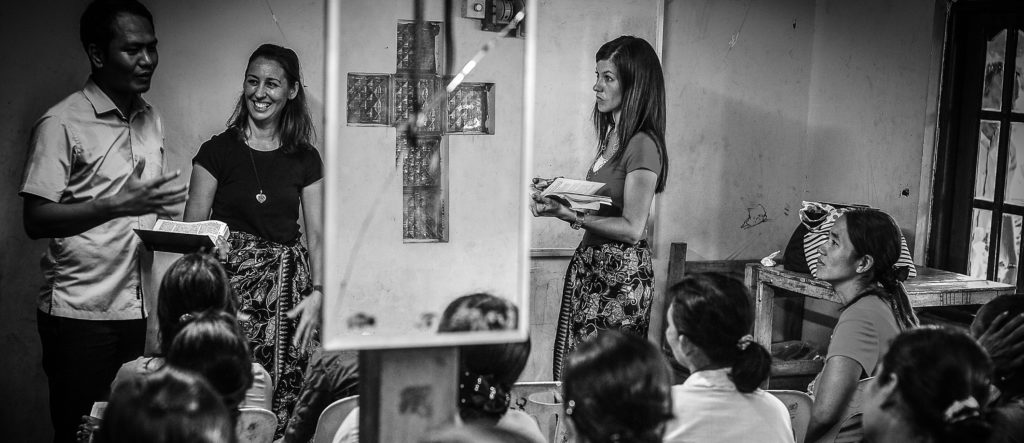During the conference from ‘Krakow 2 Panama’ held in Rome in April 2017, Fr Fabio Attard SDB was asked to share his thoughts on the third part of the Preparatory Document For The 15th Ordinary General Assembly of the Synod of Bishops “Youth, Faith and Vocational Discernment”. We seriously encourage those involved in youth ministry to read his sharing as it is full of insight. The article will be split into 4 parts and we will upload two parts a week. For those who have not yet had the chance to read the preparatory document please click the following links: Maltese – English

PRESENTATION OF PART III OF THE PREPARATORY DOCUMENT
FOR THE 15th ORDINARY GENERAL ASSEMBLY OF THE SYNOD OF BISHOPS
“YOUTH, FAITH AND VOCATIONAL DISCERNMENT”
Part III of the Preparatory Document (PD), Pastoral Activity, could be an easy victim of a purely operational interpretation of the ongoing process towards the Synod Young People, the Faith and Vocation Discernment. Such a summary conclusion is not complete; it is just superficial. Seen in its entirety, Part III of the PD presupposes and builds on the first two parts. Being convinced that pastoral action cannot be thought of as if it were a thing to do, we ask ourselves how can this part help us strengthen the pastoral work as an answer within the overall pastoral journey?
Part III lays open before us several specific challenges that must be read and discussed in the light of the broader journey of the Church. I offer some thoughts around 4 points that help us capture well this Part III and take advantage of the proposals it contains. I propose that we read Part III in the light of 4 perspectives that correspond to sub-titles it contains.

1. Empathy
The first point carries the theme; ‘Walking with Young People’. It is crucial to see the subject in light of the EG (Evangelii Gaudium). The three verbs used – going out, seeing, calling – are the synthesis of EG. And it is precisely in the light of the EG that the journey of youth ministry should be thought and lived.
And here we have a first challenge: the urgent need for us to keep EG as our compass. The importance of studying it well so that it remains a light that guides our pastoral steps: “going beyond a preconceived framework, encountering young people where they are, adapting to their times and pace of life and taking them seriously” is a result of pastoral empathy choice.
Pastoral empathy that shows up in the “willingness to spend time with them, to listen to the story of their lives and to be attentive to their joys, hopes, sadness and anxieties; all in an effort to share them. This leads to the enculturation of the Gospel and for the Gospel to enter every culture, even among young people.”
Going out, seeing, and calling as a pastoral attitude that becomes both a method and a journey. A life’s choice that is the result of the courage to get out of outdated and rigid patterns, the usual “we have always done so.” A choice that joyfully realizes the aspirations and hopes of the young, but also a choice that allows one to be challenged by the suffering and disappointments that they, the young people are paying too high a price.

Only when we prophetically go out and with humility we encounter the story of our young people, then we can be credible. Our words, our proposals have already been listened to and evaluated by young people before they are even spoken or heard. They are experts in judging whether our presence among them is the result of real empathy or just a barren and dry physical one. Walking with the young is beautiful but also demanding. They ask us to accompany them to the truth, but with charity. Our journey with young people is the expression of the journeying Church, the bride of Christ. It is like Christ that we as a Church journey with the young.

These two points, patient and empathic listening, and the journey of the Church, are well summarized in the EG:
As adults, we find it hard to listen patiently to them, to appreciate their concerns and demands, and to speak to them in a language they can understand. For the same reason, our efforts in the field of education do not produce the results expected. The rise and growth of associations and movements mostly made up of young people can be seen as the work of the Holy Spirit, who blazes new trails to meet their expectations and their search for a deep spirituality and a more real sense of belonging. There remains a need, however, to ensure that these associations actively participate in the Church’s overall pastoral efforts (EG n.105).
Fr Fabio Attard SDB



